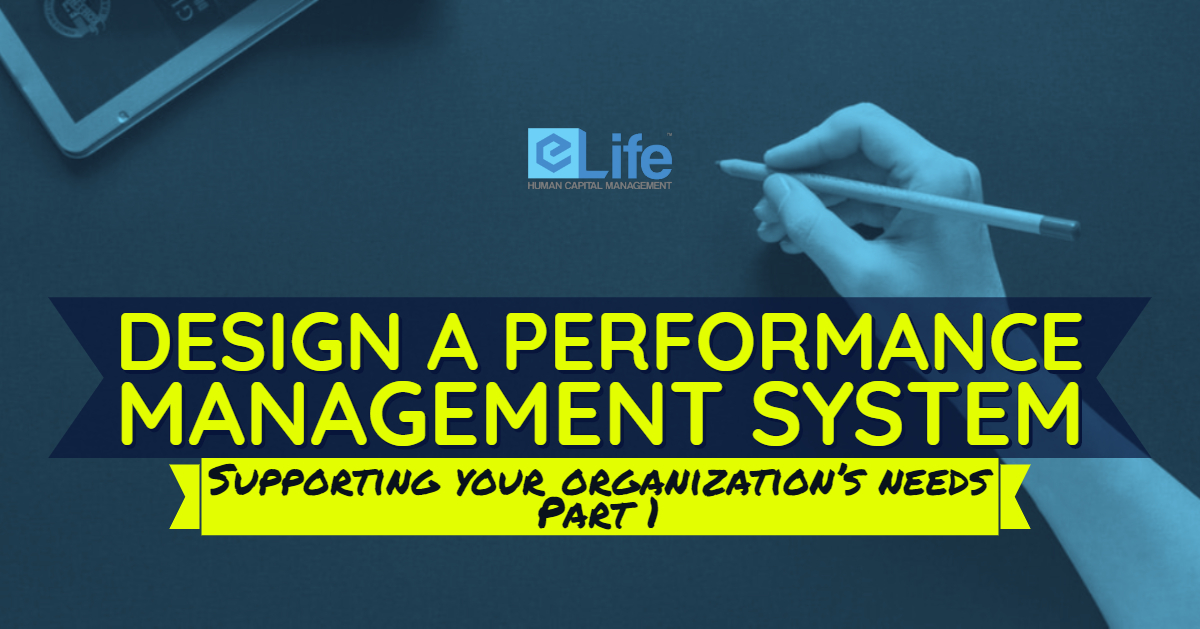Supporting your organization's needs - Part One
In today’s workforce, it is important to develop a performance management system that fits your organization and culture. Just like employee engagement tactics, there is not a one-size-fits-all solution to performance management. In this series, we will look at six different ways that you can develop a performance management system that works for you. This three-part series will discuss performance management systems that will support communication, learning, coaching, mentoring, recognition, and motivation between employees and their immediate supervisor.
It has been said and well documented that communication is the largest issue every company or department struggles with. I am not sure anyone can over-communicate. Most everyone wants to know what is going on. The trick is communicating what the staff needs to know versus what they think they need to know. We have all worked with people who found power in the knowledge of something that was happening and as long as they held onto that knowledge then they believed they were a valued part of the team. The biggest issue that comes from not communicating is trust. When employees are left to figure things out, they start to speculate on things which leads them to distrust their leaders. Here are a few ways to communicate with your team, creating a positive impact on performance management.
Check In’s
In the early seventy’s, Andy Grove, while working at Intel, started utilizing OKR’s as way to manager goals and performance management. And at the same time, he also started meeting with his employees on a regular basis. For Andy, these check in's became a way he could ensure his team was successful in meeting their objectives. Check in’s are a good way to make sure your employees have what they need and are working toward hitting their goals. Check in’s do not have to be a formal meeting or last for hours. These meetings are truly a quick check under the hood. Check in's are a great way to communication changes in the organization and will allow managers the opportunity to relay to employees firsthand what’s going on. If employees feel like you care and hear from you on a regular basis, they will be more productive.
Alley Rally
If you have ever worked in a restaurant, there is a good chance you have been part of an alley rally. Alley rallies are a quick meeting with the staff to let them know any specials or events that may be happening that day. These quick meetings are great for employee performance as they can focus the staff and motivate them at the same time. Unlike check in’s, alley rallies include the entire staff at one time and they are usually quick will bullet points of information. These events do not eliminate check in's or other methods of communication, but rather used as another tool in the arsenal for managers to use.
Town Hall Meetings
President Clinton made town hall meetings an important part of his presidential campaign. Town hall meetings are meant to be an open forum where employees can ask questions of the leadership and get answers. When done correctly, employees are left not only knowing what is going on with the organization, but they also trust their leadership team. Trust is the number one builder of performance management. If your team members don’t trust the leadership of the organization, they will not be productive.
Social Media & Technology
Communication issues can be solved quickly, especially in today’s technology advanced society. Communication becomes a bigger problem when companies have thousands of employees. If you have ever played the telephone game, then you know how easy it is for the message to get messed up. Now, multiply that times thousands of employees. Social media can help with this problem. Popular apps like Facebook or LinkedIn allow companies the ability pass messages quickly, but the problem is anyone can see it. There are now apps that solve that problem and only let the members see the information, thus allowing companies to fully utilize social media to send information without "outsides" getting the information.
Internal communication boards are a great place to put information that employees need to know. These can be hosted on a company’s intranet and can be quickly updated. Email is another quick and easy method to get information out. Although these are great solutions, they tend to be less personal than other methods discussed.
A more personal approach is utilizing a goal-tracking software which has a built-in check in feature. This allows employees to have constant feedback. Managers can easily see how employees are doing with their goals and can provide quick feedback. This process should not eliminate the face-to-face interaction of meeting, but should add more information to the process. These tools can also be used to improve employee engagement. If employees know what is expected of them and are receiving feedback, they will be more engaged in the process.
Communication is the root of frustration everywhere. It is amazing how often something happens or doesn’t happen and both parties thought the other party knew what was going on. Although everyone agrees communication is a problem, it will continue to be an issue as people get busy and either forget to communicate or they think they did communicate and stuff doesn’t happen. By utilizing some or all of these techniques, hopefully your department or company will improve its employees' performance management.

